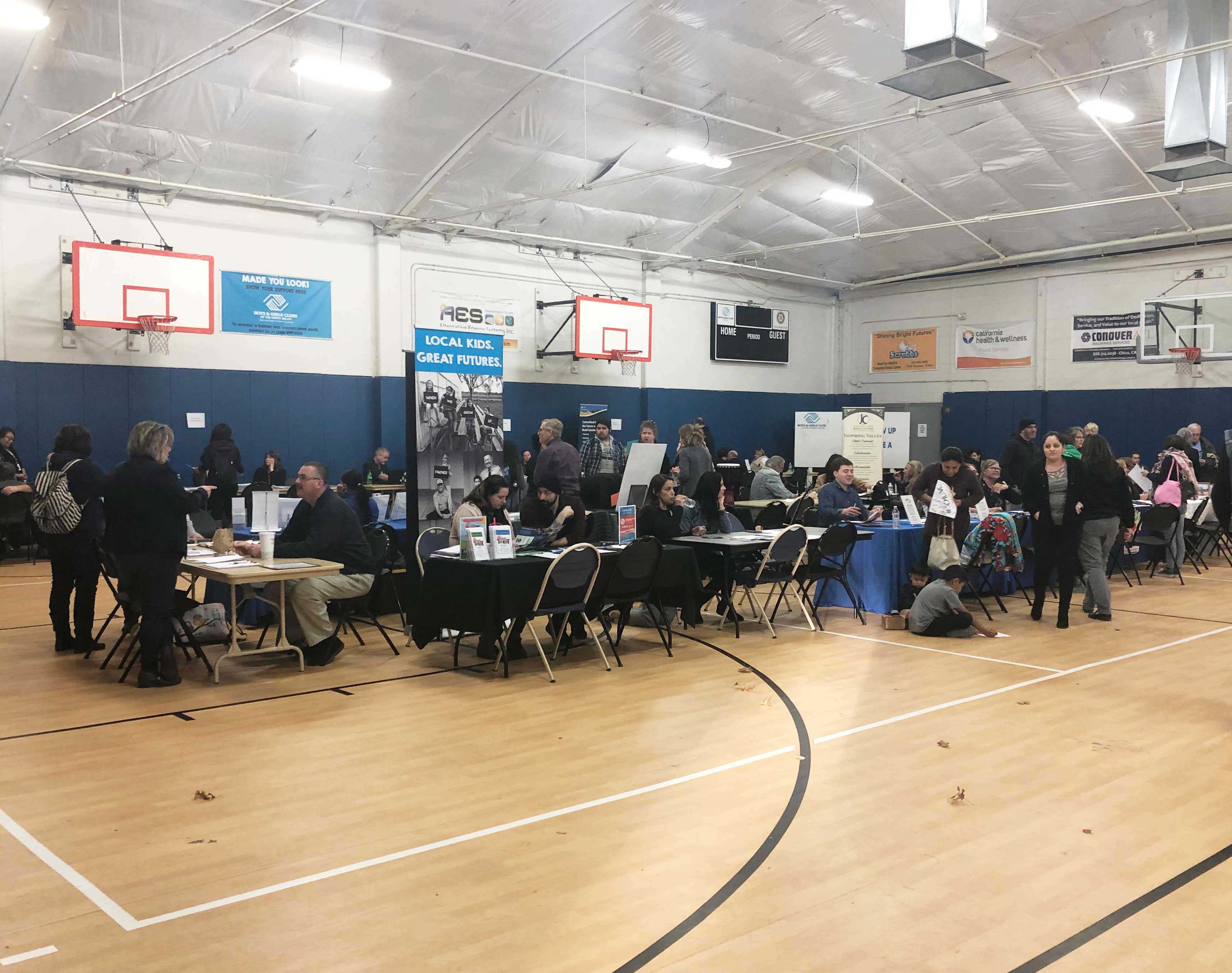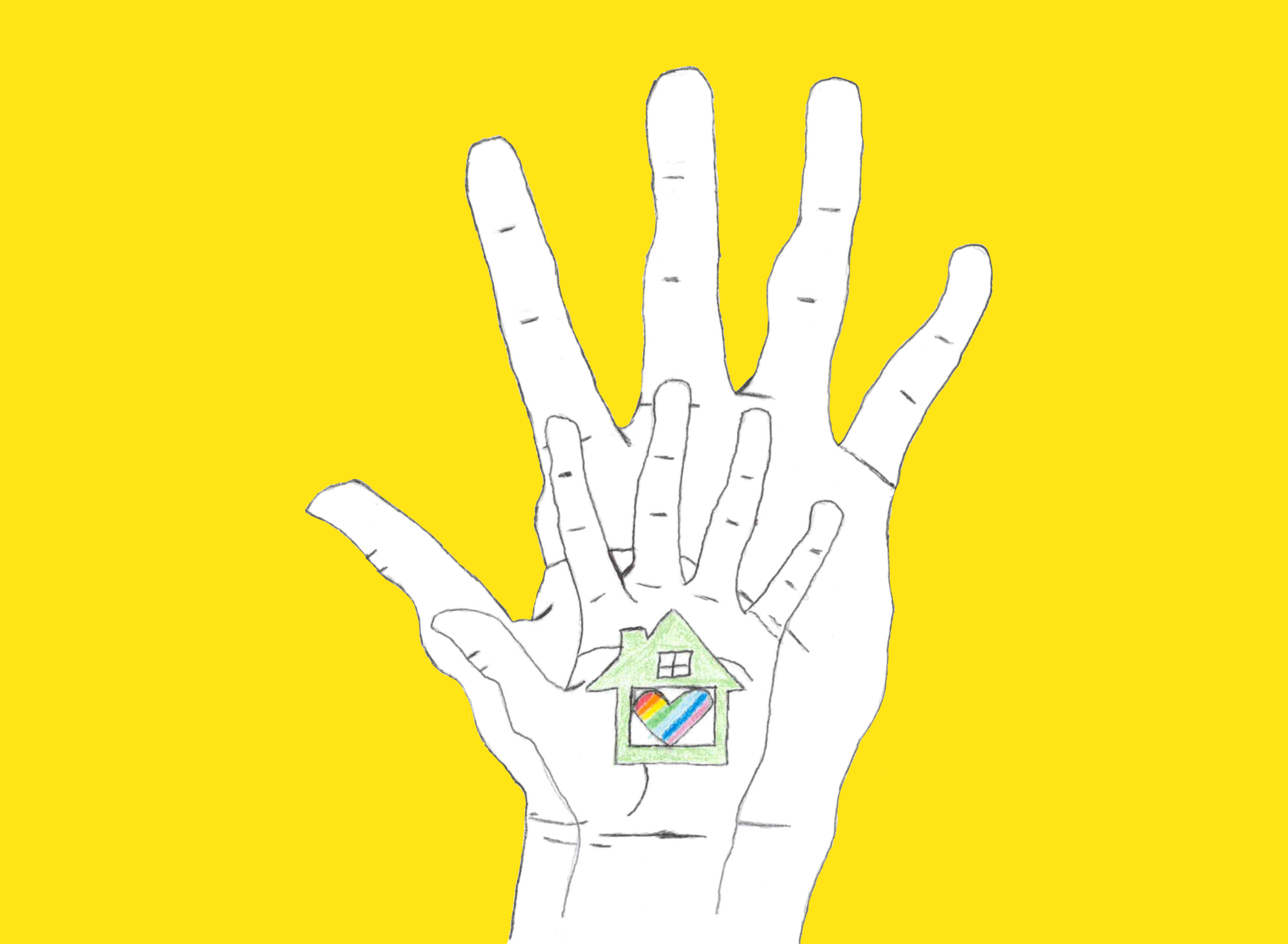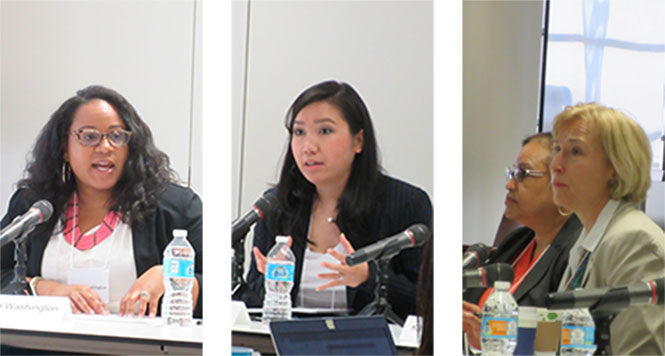Access: The TAC Blog
The Gab on YABs: Youth Action Boards Report on How They Are Partnering with Communities to End Youth Homelessness
WHAT HAPPENS WHEN YOUNG PEOPLE who have directly experienced the challenges of homelessness or unsafe/unstable housing bring their expertise, passion, and creativity to the goal of transforming systems and ending youth homelessness?
- They bring reality-based understanding to existing homelessness efforts about the unique needs of youth in a given community.
- They model a core commitment to inclusion and equity that can be a struggle for older adults and more traditional systems of decision-making.
- They form an accepting, empowering community that strengthens the youth who participate.
- All this and more!
Across the U.S., rural, suburban, and urban communities that have made a commitment to end homelessness are learning how to understand and address the specific needs of youth and young adults. Just as with other populations in need of services and resources, the insights of those most directly affected — in this case, young people with lived experience of homelessness — are essential to finding solutions. This is why one of the key first steps is for a community to form a Youth Action Board that brings youth and young adults to the forefront of planning and implementation efforts.
Over the past few years, TAC has worked closely with many communities on their plans to end youth homelessness. At the center of each engagement has been the YAB, a decision-making entity made up of youth and young adults who have experienced or are experiencing homelessness. YABs provide leadership and guidance in partnership with other key stakeholders in the process of developing and implementing a plan to end to youth homelessness in the communities where they operate.
Every community is different, but there has been a great deal of interest in “what works” for others, and communities often have questions about best practices nationally for YABs. TAC has encountered YABs at all different stages — some well-established, some that have met formally for a short time, and others that have two or three core members identified, but haven’t yet taken the next step. So TAC decided to gather a sampling of YAB expertise as a guide for communities at all stages of YAB development.
Working with Lauren Leonardis, an independent consultant specializing in youth homelessness issues and a founding director of the large and active Boston YAB, we surveyed seven YABs, seeking to capture a snapshot of each one. The communities were asked about the big picture — their strengths and challenges — as well as the small details that push them forward like facilitation practices, budget, and recruitment efforts.
The results are fascinating and inspiring as they show diverse strategies, challenges, and opportunities in each unique community at the specific moment when the survey was answered. To share them, TAC has created The Gab on YABs: a series of fact sheets with an overview of each community, to be followed soon by a “topic spotlight” series looking at patterns and trends in areas of interest like compensation, structure, recruitment, and more.
We hope these resources will answer some of the questions communities have about how other YABs are making it work. No matter what stage your community has reached, The Gab on YABs can help you bring the voices and power of youth and young adults with lived experience of homelessness directly into all planning and implementation decisions.
News, Resources, & Happenings at TAC: March 2019
Improving Homelessness Response Systems in California’s Counties
Under a new contract with California’s Department of Housing and Community Development, TAC is providing capacity-building technical assistance (TA) to help California’s communities enhance their homeless crisis response systems. First, TAC staff traveled with state officials and TA peers to meet with homeless system representatives from around the state, learning about their needs and introducing potential TA resources. Since then, TAC has been engaged by several communities, including Butte County where we are helping with disaster recovery after the devastating 2018 Camp Fire.
In Vermont, a Focus on Ending Youth Homelessness
Through the U.S. Department of Housing and Urban Development, the Vermont Balance of State Continuum of Care became an official Youth Homelessness Demonstration Program site in the summer of 2018. This award provides support to the CoC and its Youth Action Board (YAB) as they develop a plan to prevent and end youth homelessness in 13 of Vermont's 14 counties. TAC Associates Lauren Knott and Ellen Fitzpatrick are helping CoC leaders to develop and drive the planning process - focusing especially on strengthening youth voice, analyzing local data, and defining the CoC's vision for the initiative. With the CoC's written plan to HUD submitted and now approved, TAC is now helping with project selection and the implementation process. TAC staff members were also fortunate to participate in a two-day Youth Collaboration training facilitated on-site by True Colors United and including both YAB members and CoC leaders. TAC has supported the Vermont Balance of State CoC as it incorporate takeaways from this training and creates a system in which authentic youth collaboration is at the forefront of all planning to prevent and end youth homelessness in Vermont.
TAC Staff in Action
STAFF ACTIVITIES
More than 700 leaders and managers from Supportive Services for Veteran Families (SSVF) grantee organizations attended five regional meetings in January, focused on rapid resolution — with TACsters Phil Allen, Ellen Fitzpatrick, Marie Herb, Ashley Mann-McLellan, Naomi Sweitzer, Douglas Tetrault, and Jim Yates providing coordination and giving presentations; Associate Ashley Mann-McLellan presented on “Designing Coordinated Entry Systems and Prioritization to Better Serve Individual Adults” at the Solutions for Individual Homeless Adults conference sponsored by the National Alliance to End Homelessness (BONUS: Check out Ashley’s blog post on what’s working in coordinated entry!); and Senior Associate Rachel Post led two sessions on Assertive Community Treatment and intensive case management at the Fairbanks (AK) Symposium on Homelessness.
News, Resources, & Happenings at TAC: January 2019
A Nevada Community Mobilizes to End Youth Homelessness
In 2017, Southern Nevada tallied the third highest rate of unaccompanied youth homelessness in the nation. Recognizing the urgent need for a dedicated response to this crisis, the community, which includes the city of Las Vegas, issued a national request for technical assistance proposals. Through this competitive process, TAC was selected to facilitate a robust and inclusive planning effort, and ultimately to draft the first-ever Southern Nevada Plan to End Youth Homelessness.
From April to October 2018, TAC consultants Lauren Knott, Ellen Fitzpatrick, and Ashley Mann-McLellan worked with the community to create decision-making groups, analyze data to identify areas of need, articulate goals and strategies, and strengthen the active involvement of "Young Adults in Charge" (the Southern Nevada Homeless Continuum of Care's official Youth Action Board) in guiding the development of the Plan.
This engagement culminated in a Summit to End Youth Homelessness, a packed and lively event at which the Plan was officially launched. Rounding out presentations by members of the planning group, TAC consultants facilitated brainstorming sessions for Summit participants on implementation of the Plan, focusing on next steps with identified strategies. Service providers, educators, law enforcement, policymakers, funders, faith groups, and business leaders were all in attendance, demonstrating this community's broad commitment to the shared goal of ending youth homelessness in Southern Nevada.
Meeting the Challenge of Expanding Access to Integrated Physical Health and Addiction Care
With support from the Melville Charitable Trust, TAC Senior Consultant John O'Brien assembled teams of experts to produce two new papers exploring the ways care integration is being practiced - and paid for - in a rapidly changing U.S. health care environment.
Rather than searching for a uniform set of requisite elements in the integration of substance use disorder (SUD) treatment and mainstream medical care, the authors of "Integrating Substance Use Disorder Treatment & Mainstream Medical Care: Four Ground-Level Experiences" decided to showcase a few very different groups of providers that have each moved in this direction. In each case, they asked the same key questions, including "What is the context in which your integrated care effort occurred?" "Why and how did the shift to integrated care come about?" and "What more should we know about integrated care?" A condensed version of this paper was published on the AcademyHealth Blog.
From 2000 to 2014, the rate of deaths in the U.S. from drug overdoses increased by 137 percent, yet access to treatment services for people with SUDs continues to lag. Expanding the capacity of primary care providers to assess and treat addiction is critical to filling this gap, especially given the stigma associated with seeking treatment in specialty settings. "Exploring Value-Based Payment to Encourage Substance Use Disorder Treatment in Primary Care," a joint publication project with the Center for Health Care Strategies, describes how several states and health plans are exploring value-based payment to promote SUD treatment in primary care, and offers considerations for others who might want to implement these models.
TAC Staff in Action
STAFF ACTIVITIES
Executive Director Kevin Martone moderated a plenary panel on "The Health of Housing: State and Community-Based Approaches" at the National Association of Medicaid Directors' fall conference (to see the panel, start at about 31:00), delivered the keynote address at the 20th anniversary gathering of the Supportive Housing Association of New Jersey, and led a workshop on Mainstream Housing Choice Vouchers at the National Association of Housing and Redevelopment Officials (NAHRO) conference; Senior Consultant John O'Brien has been named a distinguished adviser at the Pew Charitable Trusts and was recently interviewed by Pew on "How Health Care Payers Can Help Stem the Opioid Crisis"; Subcontractor Naomi Sweitzer led a well-attended event to promote the homeless preference in multifamily housing, held at Austin (TX) City Hall and hosted by Mayor Steve Adler; Associate Ashley Mann-McLellan facilitated workshops and leadership conversations with the Suburban Cook County (IL) CoC on maximizing the impact of rapid re-housing to end homelessness; Ashley also volunteered at Boston's annual Surge to End Chronic Homelessness event; Senior Consultant Jim Yates, Associate Phil Allen, and other partners from the Rural Supportive Housing Initiative traveled to Fairbanks, AK to help the community establish new permanent supportive housing units and house more families and individuals through a robust rapid re-housing program.
January 2018: We Need All of Us: Tips for Continuums of Care Working to Include People with Lived Experience of Homelessness
IT IS NOW WIDELY ACCEPTED that planning and implementing successful programs to prevent and end homelessness requires direct involvement by people who have themselves been homeless. Individuals with this lived experience, often referred to as “consumers” because of their direct interactions with homeless services, bring a well-informed awareness of the supports that are most needed and desired. Many valued innovations, such as the Housing First approach, are based on consumer preferences shared through interactions and studies.
Continuums of Care (CoCs) — collaborative planning bodies funded by the U.S. Department of Housing and Urban Development to improve homeless service coordination in specific geographic areas or communities — are required to include on their decision-making boards people who are or have been homeless, along with key stakeholders from nonprofit provider organizations, local government agencies, philanthropic organizations, and local businesses. Furthermore, any agency that receives funding through the CoC program must include a person who is homeless or formerly homeless on its own board or other policymaking entity.
However, many CoCs and agencies receiving CoC funds lack well-developed consumer involvement strategies. In response to a 2015 survey, 47 percent of CoCs said consumers influence some decisions, while only about 15 percent indicated that consumers influence all major decisions. Some CoC respondents reported that they want to involve consumers to a greater extent, but are challenged to find people who have enough “interest and stability” to be actively and consistently involved.
In 2016, the United States Interagency Council on Homelessness reported on a gathering of consumer advocates convened to discuss how decision-making bodies can create a welcoming environment for people with lived experience of homelessness. Based on these findings, together with insights from research on mental health consumer involvement, we’ve put together some tips to help you first build interest and excitement among homeless and formerly homeless people to become actively involved, and then to make sure this involvement is a positive experience for all.
Generate Interest
Clearly “advertise” what the role is and why it is important. For a CoC board, what is the time commitment? What does the board do? For a CoC-funded agency, what input is the agency seeking?
Develop and maintain strong connections to trusted community organizations that provide housing and services to people who are homeless. These partners can identify potential candidates and encourage participation.
Financially compensate board members with lived experience of homelessness for time and travel in a similar fashion to others serving in the same capacity.
Explain responsibilities, reimbursement policies, the time commitment expected, and options for participating in different ways, such as attending meetings or reviewing draft materials. It may be helpful to use the term “like a job” to clarify the level of expectation.
Establish Stability
Language matters! Use “people first” language in all your materials and communications, such as “people who are experiencing homelessness” rather than “the homeless.” Consider your language choices when talking about subpopulations as well, for instance saying “young adults” rather than “kids” when talking about young people experiencing homelessness.
Identify and resolve any barriers to participation, like scheduling conflicts with employment, lack of access to transportation, or the need for child care. Devote part of each meeting to addressing these barriers, and meet with people individually as needed to problem-solve. Consider non-traditional meeting times to accommodate these needs, such as in the evenings or on the weekends. Meet in locations that are accessible by public transportation, and offer child care or child-friendly meeting spaces.
Designate a point person for questions and concerns. This person should check in regularly with the consumer to make sure they understand the board or committee’s processes (meeting agendas, voting procedures) and the content to be discussed during each meeting. It’s also important to bring people up to date on what happened at any meetings they missed. Offer opportunities to provide input in ways besides speaking publicly at a meeting, such as in writing or via email before or after meetings. Individualized connections like this may be especially important when working with board/committee members who have a serious mental illness.
Make every effort to accommodate consumers’ needs, particularly in relation to health difficulties. For people with disabilities, accommodations should include a physically accessible room, materials in appropriate formats (e.g., large print, Braille), and access to Communication Access Realtime Translator (CART) and American Sign Language (ASL) interpreters. The meeting’s facilitator may need to be deliberate in making the space for members with disabilities to be heard – especially those with mental health conditions. As noted earlier, making meetings child-friendly or offering child care can enable participation by people with young children.
Eliminate tokenism by recruiting more than one person with lived experience, and offer other opportunities for inclusion as well. Invite people to suggest ways in which they would like to contribute, and work to create an environment that actively engages and solicits the input of all members of the group, including those with differing communication capacities.
Learn Together
Value consumers and their perspectives regardless of what led to their experience of homelessness.
Include a cross-training component, in which each advisory board member takes five to ten minutes to explain to the group the expertise they have to offer, which for some members will include their lived experience of homelessness. Ensure that this time does not turn into a “job interview” format where members are merely listing qualifications.
Create opportunities for informal interactions between consumers and other committee members, such as sponsoring and paying for group lunches and social outings.
Consider ways to bring people with lived experience of homelessness into leadership roles within your CoC, through the board and committee membership, or by spearheading specific CoC initiatives. Establish a clear process for those who may be interested and invest time in actively recruiting members.
Make sure everyone is up to speed before shifting gears or making decisions. This includes educating consumer members on the basics of the CoC, and defining common terms and acronyms. Try to use plain, non-specialized language in meetings. Consider making decisions by consensus through group discussion, rather than by majority vote.
It can be challenging for any group to work together across significant differences in background and experience. But it’s worth it! To make their programs as effective as possible, CoCs need the insights and ideas of people with current or recent experiences of homelessness. In turn, the organizational leaders and policymakers who serve on a CoC or agency board offer connections, knowledge, and authority — valuable resources to which consumers on their own often lack access. Continuums of Care that rise to the challenge of fully incorporating people with lived experience of homelessness will be all the stronger for it.
Helpful Resources:
A Quick Guide on Consumer Engagement in Governance of Health Care for the Homeless Projects (2016, National Health Care for the Homeless Council).
Guidance for Consumer Advisory Board Staff Support [on Homlessness Projects] (2017, National Health Care for the Homeless Council).
Nothing About Us Without Us: Seven Principles for Leadership and Inclusion of People with Lived Experience of Homelessness (2016, Lived Experience Advisory Council of the Canadian Obervatory on Homelessness).
Recommendations for Effective Implementation of the HEARTH Act Continuum of Care Regulations (2012, National Alliance to End Homelessness)
Youth Collaboration Toolkit (2017, True Colors Fund)
Thanks to TAC Associate Lauren Knott for her assistance with this post!
December 2017: Coordinated Entry — What's Working Well
FOR SEVERAL YEARS, TAC consultants have been on a journey with communities to create effective, sound Coordinated Entry (CE) systems and processes that contribute to their larger goal of ending homelessness. As the U.S. Department of Housing and Urban Development’s (HUD) January 23, 2018 deadline for Coordinated Entry compliance nears, we want to share some planning tips that we have seen contribute to creative and efficient systems.
Align Your Local Goals to End Homelessness WITH HUD’s Goals for Coordinated Entry
We often see communities concerned about the compliance aspect of Coordinated Entry, which leads them to direct planning efforts toward the goal of “checking off the boxes” of Coordinated Entry requirements. We challenge communities instead to consider Coordinated Entry a powerful tool in their efforts to end homelessness. HUD promotes some key strategies that really are essential in reducing and ending homelessness, such as ensuring that all processes are as low-barrier as possible, implementing uniform assessment to ensure uniform decision-making across systems, and prioritizing assistance to the most vulnerable. Some planning activities to align your own local goals with the goals of Coordinated Entry might be helpful:
-
Create a crosswalk between key goals in your local strategic plan to end homelessness and those in HUD’s Coordinated Entry Notice.
-
Spend some time with your stakeholders envisioning your ideal system for any consumer. Draw on this process to create a list of values that will guide decision-making throughout the CE planning process.
-
Engage local funders to be part of planning efforts by finding alignment between their goals and your CE goals.
Integrate Change Management Strategies into Planning
Implementing Coordinated Entry is a significant systems change, and will continue to have effects long past a community’s first iteration of CE. It is important to acknowledge the shift that stakeholders will undergo, and to use change management strategies that can strengthen the planning process:
-
Continually acknowledge the change that is happening. This will start to normalize the process, making the reality of systems change familiar to your stakeholders.
-
Engage your stakeholders in creating the system, or in problem-solving any challenges that arise. People often respond better to change if they are part of the thought process, rather than having change forced upon them.
-
Work to create a culture of innovation and “failing forward.” It’s good to make use of reference materials to guide Coordinated Entry planning processes, but the bottom line is that there is no pre-packaged Coordinated Entry system with assembly instructions. Each community must figure out what works given its own local stakeholders, populations, and conditions. A learning culture that celebrates innovation can help to promote new ideas and reduce negative backlash toward methods that were tried but did not succeed. We are seeing this type of culture work well particularly in the development of diversion techniques within Coordinated Entry.
Promote Fidelity to Housing First
The guiding principles of the Housing First philosophy are critical to creating flow through your Coordinated Entry system. Practices such as lowering barriers to housing admission, creating housing pathways and processes with a commitment to referral success, fostering participant choice, prioritizing assistance to the most vulnerable, and terminating participants from housing programs only in the most egregious cases not only create system flow, but also poise communities to improve their success in several of HUD’s system performance measures. To maintain fidelity to Housing First, there are several actions your community can take:
-
Incorporate consumers into your planning process. Communities have found many ways to infuse consumer voices into planning in a meaningful way. Often the key is to employ several strategies at once: hold multiple seats for consumers on your planning committees and Continuum of Care board; create a consumer advisory body to receive an even more diverse set of viewpoints; hold focus groups with consumers who may not be able to commit to an ongoing committee, but who would like to give input; and compensate consumers for their time.
-
Continually assess programs’ fidelity to Housing First. Programs may incorporate self-assessments, such as the Housing First Assessment recently released by HUD, to gauge current fidelity and identify areas for improvement. Many communities have also found success in setting up learning collaboratives for both frontline and manager-level program staff to share strategies in implementing a Housing First philosophy.
-
Get funders trained and engaged in Housing First. At TAC, we have done substantial work with communities’ funders to assist them in aligning their contracts, performance targets, and monitoring processes with the Housing First philosophy. Getting funders on board helps with the promotion of Housing First not only at a program level, but at a systems level.
We are continually impressed by the perseverance we have seen in communities to create Coordinated Entry systems and processes that can drive progress towards ending homelessness. We look forward to continuing to learn alongside you!
June 2017: News, Resources, and Happenings at TAC
Propelling Innovation to End Youth Homelessness
TAC consultants have been criss-crossing the U.S. this spring to help strengthen local youth homelessness prevention efforts. In Washington's Seattle/King County, our TA is an integral part of the Youth Homelessness Demonstration Program, a HUD initiative awarded to ten communities. So far, we've worked with Seattle/King County on flexible system design, engaging a Youth Advisory Board, compiling promising practices from across the country, analyzing data to measure the need for housing and services, creating landscape scans of current housing and service inventories, and developing continuous improvement strategies the community can use to evaluate and learn from implementation. Once the planning process wraps up in July, our focus will shift to creating an implementation "road map" for community stakeholders and providing training and capacity-building to Seattle/King County agencies working to end youth homelessness in their community. Learn more about TAC's TA with programs serving children and youth.
Sharing Strategies for Successful Community Integration
From May 1-2, HUD Section 811 Project Rental Assistance grantees from 25 states — including both housing and service providers — joined TAC staff members and officials from the Department of Housing and Urban Development (HUD) and the Centers for Medicare and Medicaid Services (CMS) in Washington, DC. Participants in this TAC-organized initiative shared successes and insights from their experiences implementing PRA to expand integrated supportive housing opportunities for extremely low-income people with disabilities.
TAC Staff in Action
STAFF ACTIVITIES
Policy Advisor Francine Arienti and TAC consultant Naomi Sweitzer were invited by the Vermont Youth Homelessness Prevention Plan Committee to present on federal/state resources and models of state plans around the country; Senior Associate Jonathan Delman gave the keynote address at Employment Matters! (annual conference of the Massachusetts Association of People Supporting Employment First); Jon's article on "Employer-based Strategies to Increase Employment Rates for People Living with Serious Mental Illness," co-authored with Senior Consultant Lynn Kovich and Executive Director Kevin Martone, has been published in Psychiatric Rehabilitation Journal; Associate Ashley Mann-McLellan hosted a community planning meeting in Denver to help advance the city's strategy on ending veteran homelessness; Ashley also met with HUD Youth Homelessness Demonstration Project grantees and TA providers at the CSH Supportive Housing Summit in May; and Associate Douglas Tetrault presented on "Community-wide System Assessment and Improvement" at the National Coalition for Homeless Veterans conference, while Senior Consultant Jim Yates presented on "Using Federal Fair Housing Guidance to Reduce Access Barriers to Housing" at NCHV's pre-conference Housing Summit.
POSITION AVAILABLE
TAC is seeking a Senior Associate/Consultant with expertise in behavioral health and Medicaid. Read the full description and application information.









